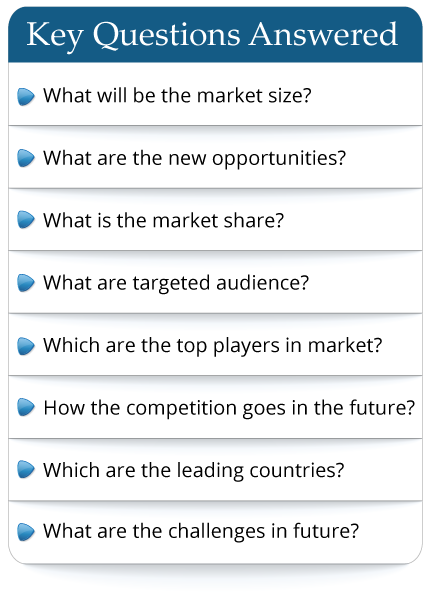Viral vectors carry genetic material into cells by exploiting the molecular mechanisms by which viruses transmit their genomes to other cells for infection.It can occur in vivo or in vitro.Plasmid carriers are plasmids artificially constructed on the basis of natural plasmids to adapt to laboratory operations.In recent years, global viral vector and plasmid DNA manufacturing has developed rapidly, with a compound growth rate of about 28% during 2018-2018.In 2018, global sales of viral vector and plasmid DNA production reached $381 million.In 2018, China accounted for about 4% of global sales.In the next five years, the production of viral vectors and plasmid DNA products in China will continue to grow rapidly.Viral vector and plasmid DNA manufacturing are mainly divided into viral vector manufacturing and plasmid DNA manufacturing, among which viral vector manufacturing accounts for the largest proportion, accounting for nearly 38% of the total market in 2018.Viral vector and plasmid DNA manufacturing is mainly used for drug development and production of cancer, genetic diseases, viral infections and other diseases, among which cancer is the main application field, accounting for 35% in 2018.The market is highly competitive.Brammer Bio, Oxford BioMedica, Cobra Biologics, FinVector and Lonza are major suppliers.They have mastered key technologies and patents, and they have a fixed customer base. They have established a monopoly in the market.Gene therapy technology innovation and clinical trials have mushroomed in recent years, and a number of gene therapy projects have been approved for marketing in the United States, the European Union, China and other countries.The target of gene therapy has also been gradually expanded from single gene genetic diseases to malignant tumors, infectious diseases, cardiovascular diseases, autoimmune diseases, metabolic diseases and other major diseases.
The global market for Viral Vector and Plasmid DNA was estimated to be worth US$ 667.5 million in 2023 and is forecast to a readjusted size of US$ 2327.4 million by 2030 with a CAGR of 19.3% during the forecast period 2024-2030
Global Viral Vector and Plasmid DNA key players include BioReliance, Oxford BioMedica, UniQure, Cobra Biologics, etc. Global top four manufacturers hold a share over 45%.
North America is the largest market, with a share about 50%, followed by Europe, and Asia-Pacific, both have a share over 40 percent.
In terms of product, Viral Vectors is the largest segment, with a share about 80%. And in terms of application, the largest application is Cancers, followed by Inherited Disorders, Viral Infections, etc.
Report Scope
This report aims to provide a comprehensive presentation of the global market for Viral Vector and Plasmid DNA, focusing on the total sales revenue, key companies market share and ranking, together with an analysis of Viral Vector and Plasmid DNA by region & country, by Type, and by Application.
The Viral Vector and Plasmid DNA market size, estimations, and forecasts are provided in terms of sales revenue ($ millions), considering 2023 as the base year, with history and forecast data for the period from 2019 to 2030. With both quantitative and qualitative analysis, to help readers develop business/growth strategies, assess the market competitive situation, analyze their position in the current marketplace, and make informed business decisions regarding Viral Vector and Plasmid DNA.
Market Segmentation
By Company
Brammer Bio
Oxford BioMedica
Cobra Biologics
FinVector
Lonza
BioReliance
MolMed
FUJIFILM Diosynth Biotechnologies
UniQure
Aldevron
Richter-Helm
Eurogentec
OBiO Technology
Yposkesi
Cell and Gene Therapy Catapult
MassBiologics
Biovian
VGXI
Gene Synthesis
PlasmidFactory
Jikai Gene
Segment by Type:
Plasmid DNA
Viral Vector
Segment by Application
Cancer
Virus Infection
Hereditary Disease
By Region
North America
U.S.
Canada
Europe
Germany
France
U.K.
Italy
Russia
Asia-Pacific
China
Japan
South Korea
China Taiwan
Southeast Asia
India
Latin America
Mexico
Brazil
Argentina
Middle East & Africa
Turkey
Saudi Arabia
UAE
Chapter Outline
Chapter 1: Introduces the report scope of the report, global total market size. This chapter also provides the market dynamics, latest developments of the market, the driving factors and restrictive factors of the market, the challenges and risks faced by manufacturers in the industry, and the analysis of relevant policies in the industry.
Chapter 2: Detailed analysis of Viral Vector and Plasmid DNA manufacturers competitive landscape, revenue market share, latest development plan, merger, and acquisition information, etc.
Chapter 3: Provides the analysis of various market segments by Type, covering the market size and development potential of each market segment, to help readers find the blue ocean market in different market segments.
Chapter 4: Provides the analysis of various market segments by Application, covering the market size and development potential of each market segment, to help readers find the blue ocean market in different downstream markets.
Chapter 5: Revenue of Viral Vector and Plasmid DNA in regional level. It provides a quantitative analysis of the market size and development potential of each region and introduces the market development, future development prospects, market space, and market size of each country in the world.
Chapter 6: Revenue of Viral Vector and Plasmid DNA in country level. It provides sigmate data by Type, and by Application for each country/region.
Chapter 7: Provides profiles of key players, introducing the basic situation of the main companies in the market in detail, including product revenue, gross margin, product introduction, recent development, etc.
Chapter 8: Analysis of industrial chain, including the upstream and downstream of the industry.
Chapter 9: Conclusion.
The global market for Viral Vector and Plasmid DNA was estimated to be worth US$ 667.5 million in 2023 and is forecast to a readjusted size of US$ 2327.4 million by 2030 with a CAGR of 19.3% during the forecast period 2024-2030
Global Viral Vector and Plasmid DNA key players include BioReliance, Oxford BioMedica, UniQure, Cobra Biologics, etc. Global top four manufacturers hold a share over 45%.
North America is the largest market, with a share about 50%, followed by Europe, and Asia-Pacific, both have a share over 40 percent.
In terms of product, Viral Vectors is the largest segment, with a share about 80%. And in terms of application, the largest application is Cancers, followed by Inherited Disorders, Viral Infections, etc.
Report Scope
This report aims to provide a comprehensive presentation of the global market for Viral Vector and Plasmid DNA, focusing on the total sales revenue, key companies market share and ranking, together with an analysis of Viral Vector and Plasmid DNA by region & country, by Type, and by Application.
The Viral Vector and Plasmid DNA market size, estimations, and forecasts are provided in terms of sales revenue ($ millions), considering 2023 as the base year, with history and forecast data for the period from 2019 to 2030. With both quantitative and qualitative analysis, to help readers develop business/growth strategies, assess the market competitive situation, analyze their position in the current marketplace, and make informed business decisions regarding Viral Vector and Plasmid DNA.
Market Segmentation
By Company
Brammer Bio
Oxford BioMedica
Cobra Biologics
FinVector
Lonza
BioReliance
MolMed
FUJIFILM Diosynth Biotechnologies
UniQure
Aldevron
Richter-Helm
Eurogentec
OBiO Technology
Yposkesi
Cell and Gene Therapy Catapult
MassBiologics
Biovian
VGXI
Gene Synthesis
PlasmidFactory
Jikai Gene
Segment by Type:
Plasmid DNA
Viral Vector
Segment by Application
Cancer
Virus Infection
Hereditary Disease
By Region
North America
U.S.
Canada
Europe
Germany
France
U.K.
Italy
Russia
Asia-Pacific
China
Japan
South Korea
China Taiwan
Southeast Asia
India
Latin America
Mexico
Brazil
Argentina
Middle East & Africa
Turkey
Saudi Arabia
UAE
Chapter Outline
Chapter 1: Introduces the report scope of the report, global total market size. This chapter also provides the market dynamics, latest developments of the market, the driving factors and restrictive factors of the market, the challenges and risks faced by manufacturers in the industry, and the analysis of relevant policies in the industry.
Chapter 2: Detailed analysis of Viral Vector and Plasmid DNA manufacturers competitive landscape, revenue market share, latest development plan, merger, and acquisition information, etc.
Chapter 3: Provides the analysis of various market segments by Type, covering the market size and development potential of each market segment, to help readers find the blue ocean market in different market segments.
Chapter 4: Provides the analysis of various market segments by Application, covering the market size and development potential of each market segment, to help readers find the blue ocean market in different downstream markets.
Chapter 5: Revenue of Viral Vector and Plasmid DNA in regional level. It provides a quantitative analysis of the market size and development potential of each region and introduces the market development, future development prospects, market space, and market size of each country in the world.
Chapter 6: Revenue of Viral Vector and Plasmid DNA in country level. It provides sigmate data by Type, and by Application for each country/region.
Chapter 7: Provides profiles of key players, introducing the basic situation of the main companies in the market in detail, including product revenue, gross margin, product introduction, recent development, etc.
Chapter 8: Analysis of industrial chain, including the upstream and downstream of the industry.
Chapter 9: Conclusion.
Frequently Asked Questions
This market study covers the global and regional market with an
in-depth analysis of the
overall growth prospects...
- By product type
- By End User/Applications
- By Technology
- By Region
The report provides a detailed evaluation of the market by
highlighting information on
different aspects including drivers, restraints...

 Pre-order Enquiry
Pre-order Enquiry Download Free Sample
Download Free Sample












